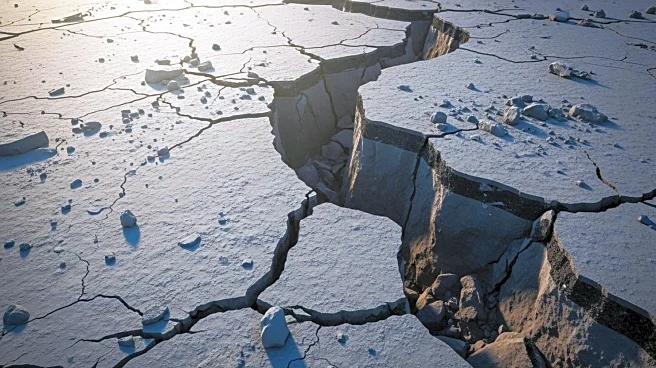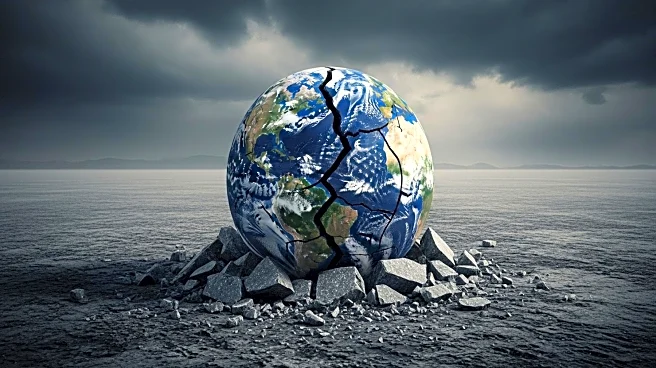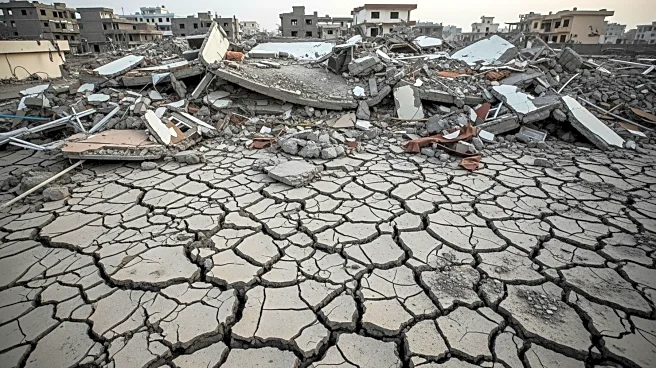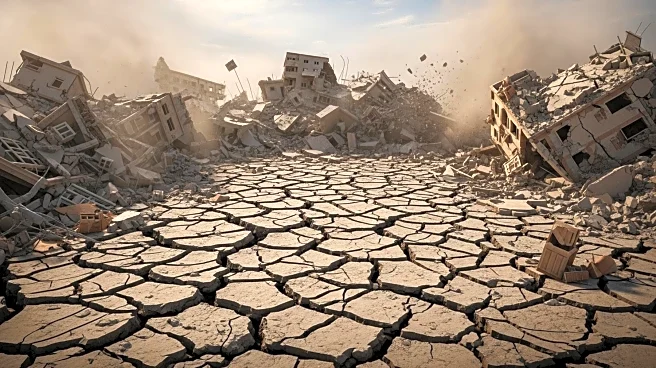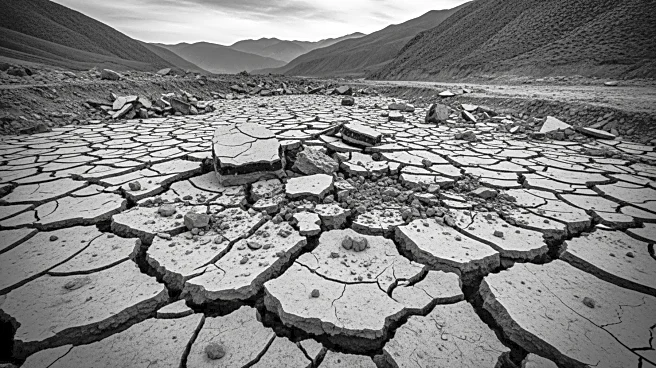What's Happening?
A 6.0 magnitude earthquake struck eastern Afghanistan, particularly affecting the provinces of Kunar and Nangarhar. The epicenter was near Jalalabad, and the quake resulted in significant casualties and destruction. Reports indicate that at least 622 people have died, with over 1,500 injured. The earthquake followed recent flooding in the region, exacerbating the disaster. Rescue teams are struggling to reach affected areas due to blocked roads and challenging terrain, with helicopters unable to land in mountainous regions at night.
Why It's Important?
The earthquake has caused widespread devastation in a region already grappling with the aftermath of severe flooding. The impact on local communities is profound, with entire villages reduced to rubble and healthcare facilities overwhelmed by the influx of injured individuals. The disaster highlights the vulnerability of Afghanistan's infrastructure and the challenges faced by rescue operations in remote areas. The humanitarian crisis is likely to strain resources and require international aid to support recovery efforts.
What's Next?
Rescue operations are ongoing, with the Taliban government mobilizing teams to provide comprehensive support. The focus will be on reaching isolated communities and providing medical assistance to the injured. International aid organizations may step in to offer support, and the government will likely seek assistance to rebuild affected areas. The long-term recovery process will involve addressing infrastructure weaknesses and improving disaster preparedness.
Beyond the Headlines
The earthquake underscores the need for improved infrastructure and disaster response capabilities in Afghanistan. The country's mountainous terrain and limited road access pose significant challenges for emergency services. Additionally, the influx of refugees from neighboring regions adds complexity to the humanitarian response, as resources are stretched to accommodate displaced populations.



